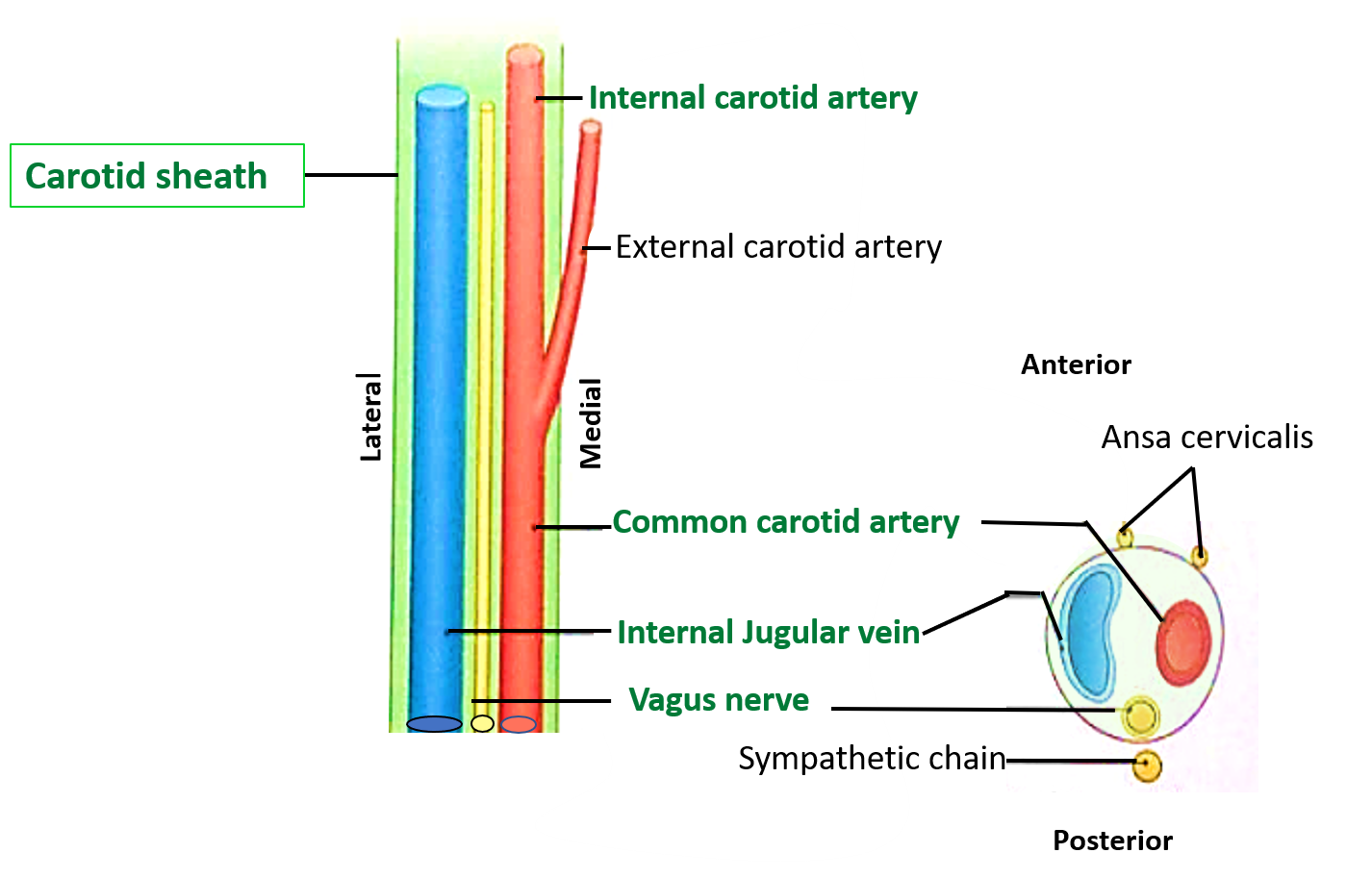Name the layers of Deep Cervical Fascia.
Deep cervical fascia or fascia colli invests the muscles of the neck, forms capsules of the glands and protective sheath around neurovascular structures.
It is arranged in three layers, from outside inwards they are:
- Investing layer
- Pre-vertebral layer
- Pre-tracheal layer and
- Carotid sheath (around the neurovascular bundle)
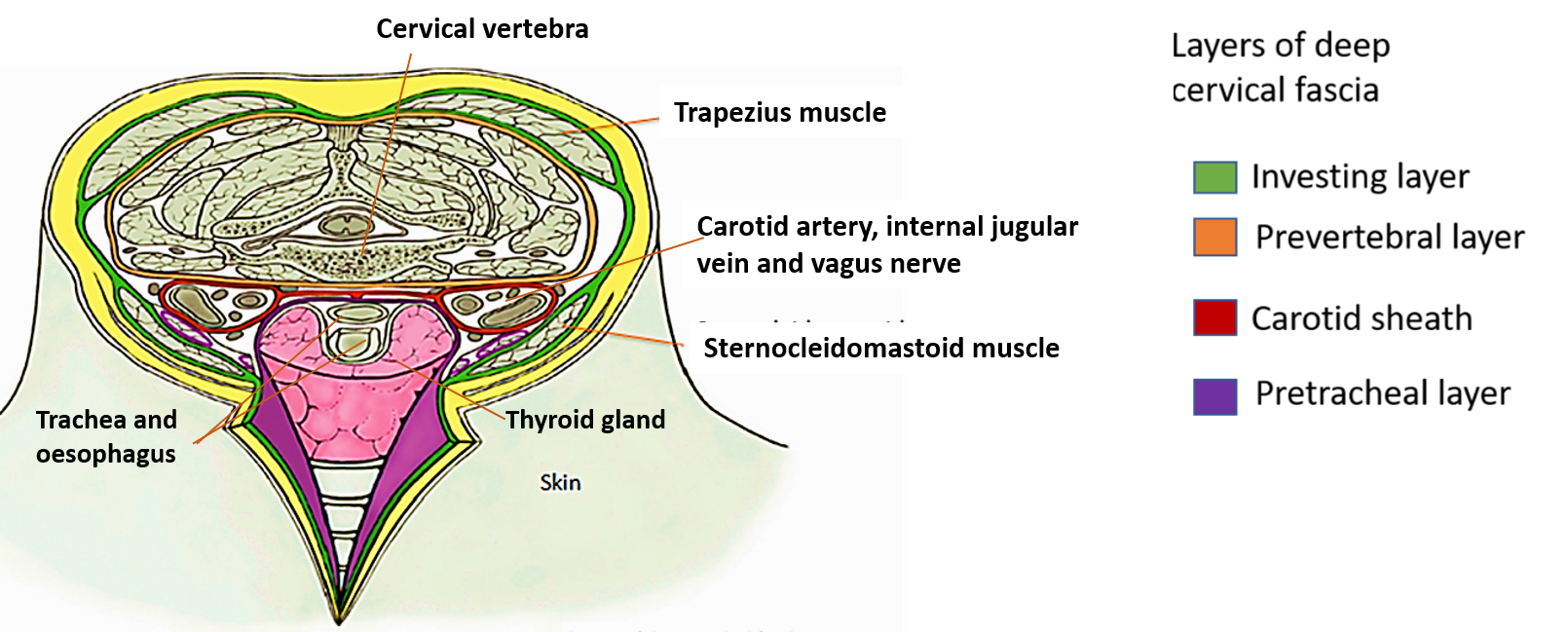 The arrangement of deep cervical fascia divides the neck into following compartments:
The arrangement of deep cervical fascia divides the neck into following compartments:
- One Vertebral – posterior to prevertebral layer
- Two Neurovascular – laterally , enclosed in carotid sheaths
- One Visceral – anteriorly between pretracheal and prevertebral layers.
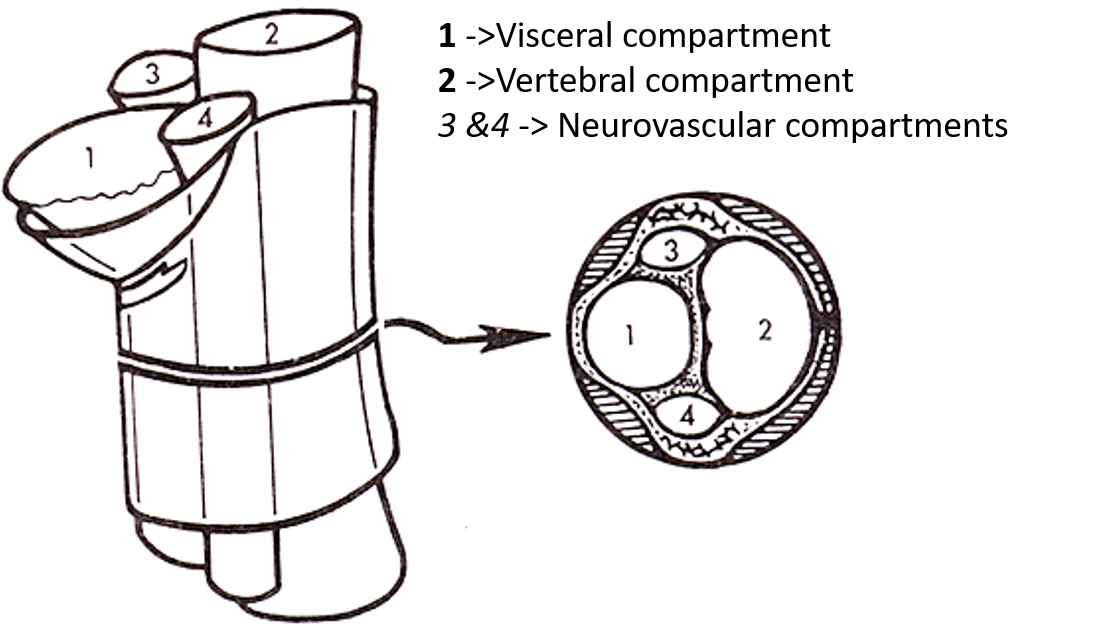
Horizontal disposition of Deep Cervical Fascia
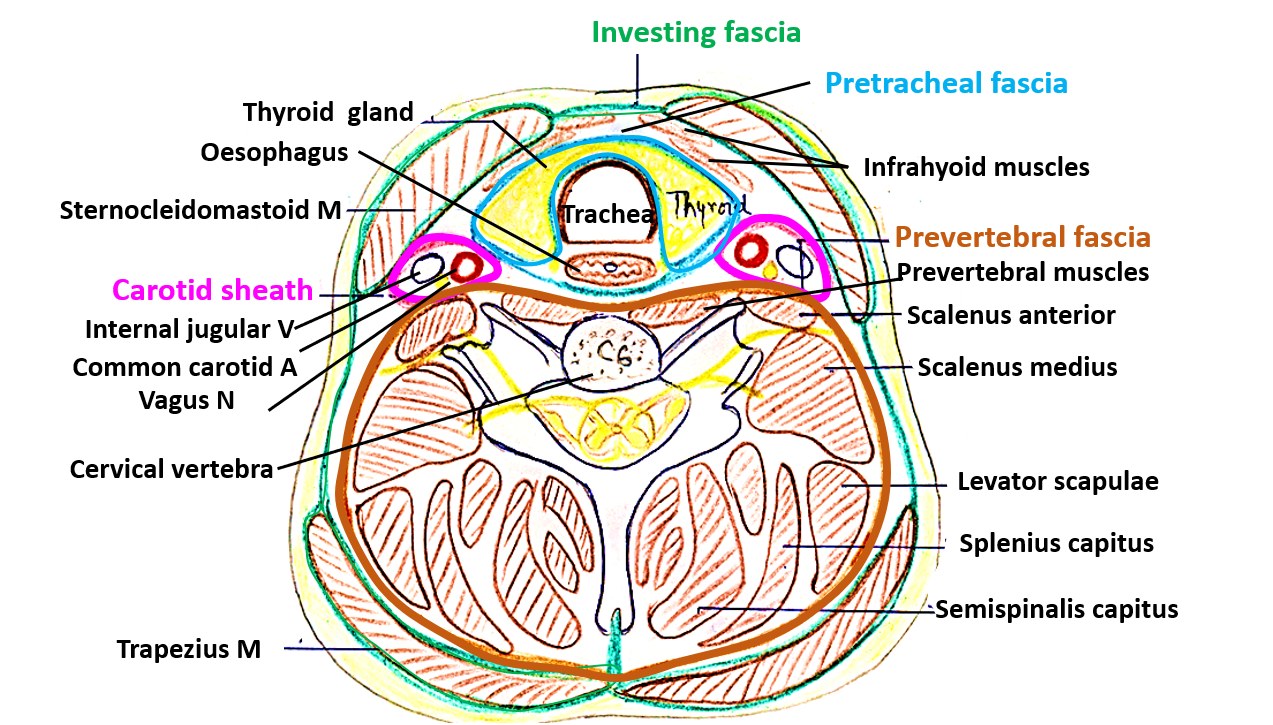
Vertical disposition of Deep Cervical Fascia
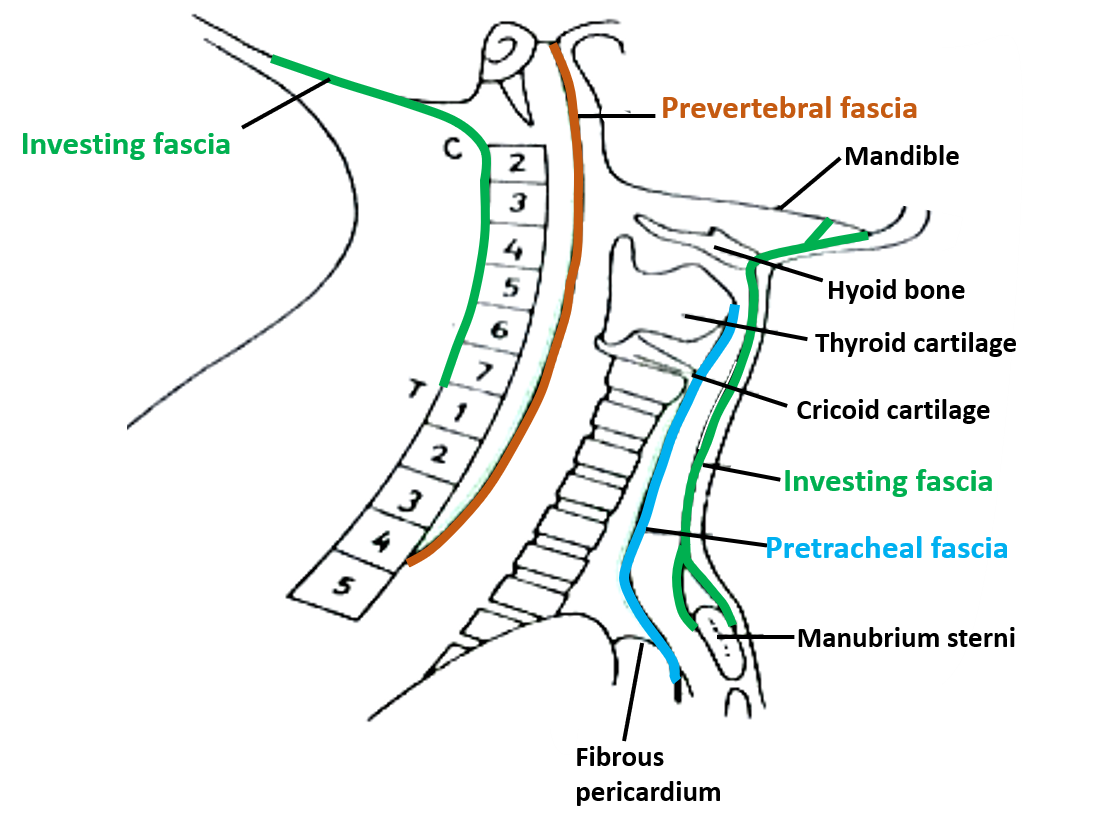
Describe the attachment and structures enclosed by investing layer of Deep Cervical Fascia.
It encircles the neck like a collar deep to superficial fascia.
Extent and Attachment:
- Superiorly: It is attached to the external occipital protuberance, superior nuchal line, mastoid process, base of mandible (between angle of mandible and mastoid process it enclose parotid gland).
- Inferiorly: It is attached to the spine of scapula, acromion process, clavicle and manubrium sterni.
- Posteriorly: It is attached to the ligamentum nuchae and spine of seventh cervical vertebra.
- Anteriorly: It is attached to the symphysis menti, hyoid bone and is continuous with the fascia of the opposite side.
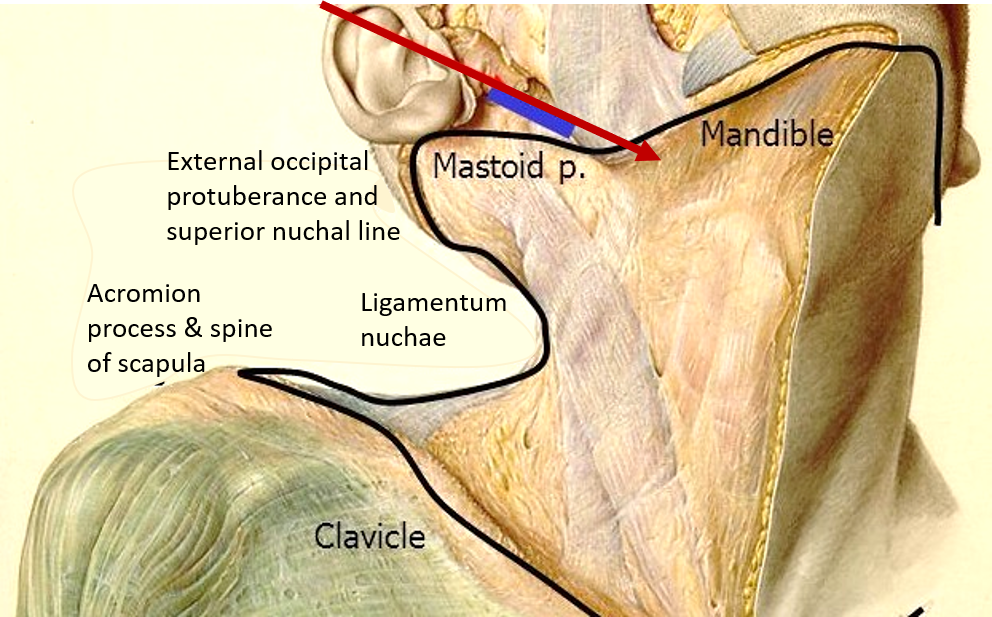
Structures enclosed: It encloses the following structures:
- Two muscles – sternocleidomastoid and trapezius
- Two glands – parotid and submandibular
- Two spaces – suprasternal and supraclvicular
Describe the attachment of Pretracheal Fascia.
It covers the front and sides of trachea and splits to enclose the thyroid gland and forms its false capsule.
Attachments:
- Superiorly: It is attached to the hyoid bone, oblique line of thyroid cartilage and cricoid cartilage.
- Inferiorly: It blends with the adventitia of arch of aorta and fibrous pericardium.
- Laterally: It merges with the carotid sheath
A fibrous band termed ligament of Berry is the extension of this fascia which attaches the capsule of the lobe of the thyroid gland to the cricoid cartilage.
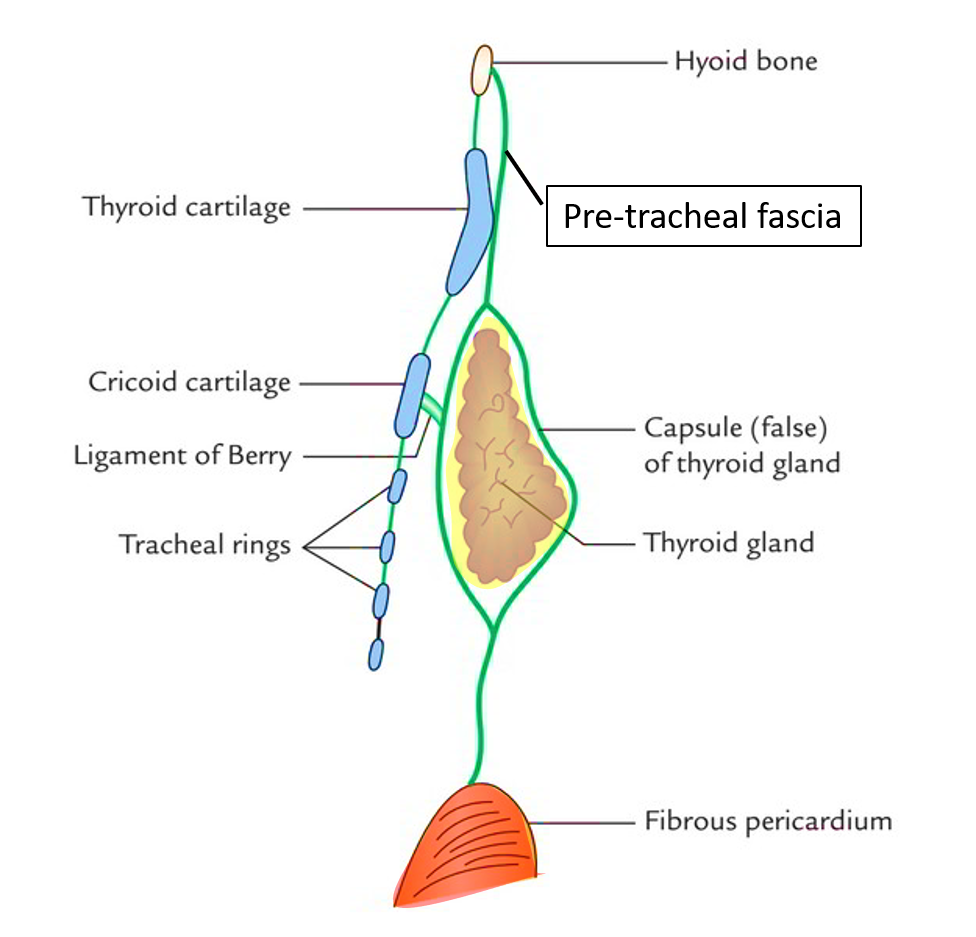
Applied Anatomy
Thyroid gland moves up and down during deglutition
The pretracheal fascia which forms the false capsule of thyroid gland Is thickened posteriorly to form the suspensory ligament of Berry. The ligament connects the medial surface of lateral lobes of thyroid gland to cricoid cartilage. Therefore, the gland moves up and down with larynx during deglutition.
Describe attachment of Prevertebral Fascia
It lies in front of the cervical and upper three thoracic vertebrae and prevertebral muscles. It forms the floor of posterior triangle.
Attachments:
- Superiorly: It is attached to the base of skull in front of foramen magnum.
- Inferiorly: It is attached to the anterior longitudinal ligament and body of T3 vertebra.
- It covers the muscles forming floor of the posterior triangle.
- Cervical and brachial plexus lie deep to it.
- The trunks of brachial plexus and the subclavian artery emerge between the scalenus anterior and medius muscles (covered by per-vertebral fascia) and carry a sheath (axillary sheath) of this fascia along with them to the axilla.
- The space behind it and in front of vertebrae is prevertebral space.
- The space in front of it and behind the pharynx is retropharyngeal space. It contains loose areolar tissue and retropharyngeal lymph nodes.
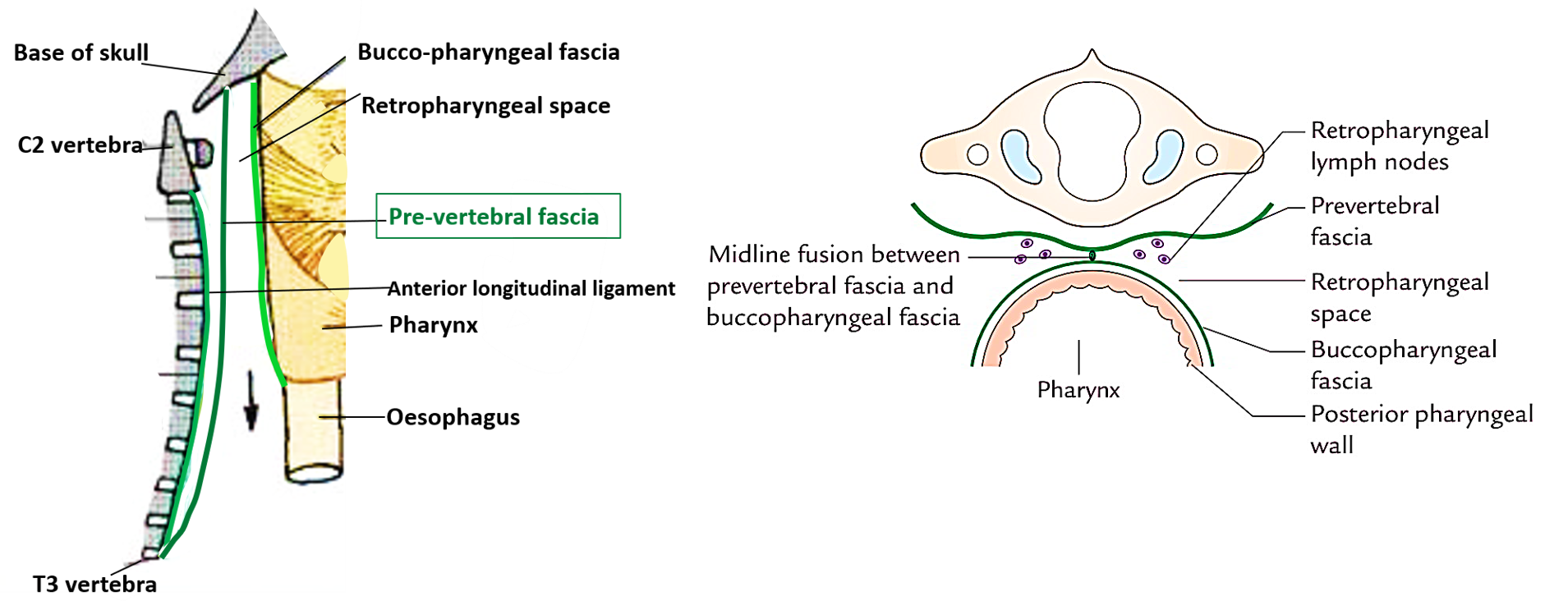
Applied Aspects
Pus collected in the prevertebral space usually arise from the caries of cervical vertebrae. It may project/travel:
- Forward and cause midline bulge in the posterior pharyngeal wall.
- Laterally first into the posterior triangle and then along axillary sheath into the axilla.
- Downwards into superior mediastinum limited by fusion of prevertebral fascia to T3 vertebra.
Pus from the neck infections in front of the prevertebral fascia i.e. in the retropharyngeal space (from suppuration of the retropharyngeal lymph nodes) may project/travel:
- Forward in the paramedian position (due to fusion of buccopharyngeal fascia to prevertebral fascia in the median plane).
- May extend down into the superior mediastinum to posterior mediastinum.

Describe briefly Carotid Sheath.
Carotid sheath is a tubular condensation of deep cervical fascia around common and internal carotid arteries, internal jugular vein and vagus nerve.
- It extends from the base of skull to the arch of aorta.
- It is thick around the common and internal carotid arteries and thin around internal jugular vein.
- Ansa cervicalis is embedded in the anterior wall of the carotid sheath.
- Cervical part of sympathetic chain lies behind the carotid sheath and in front of prevertebral fascia.
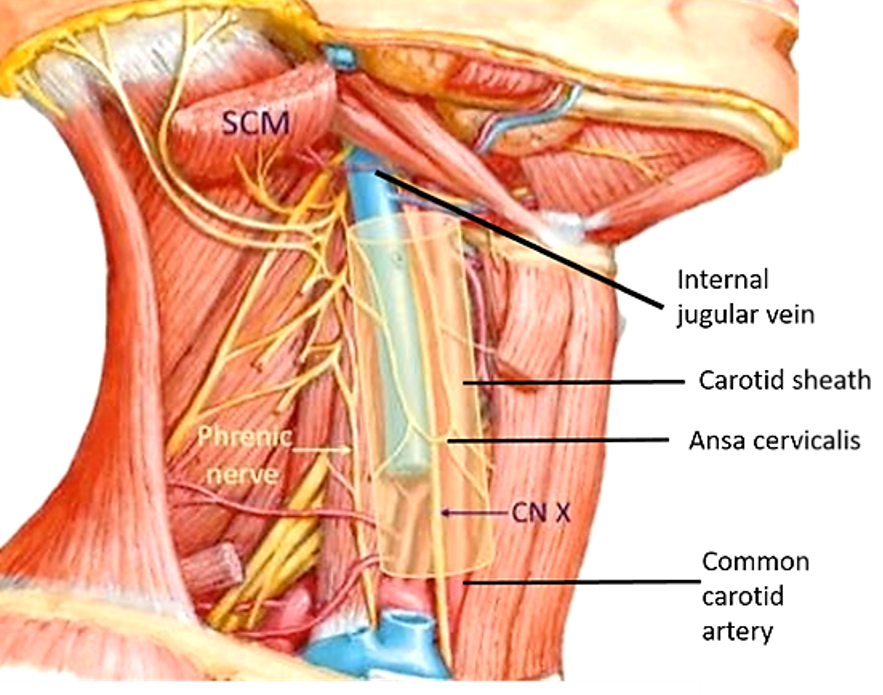
Contents of Carotid Sheath are:
- Common carotid artery till the upper border of thyroid cartilage and internal carotid artery above this level.
- Internal jugular vein in the entire extent.
- Vagus nerve in the entire extent (it is posterior to the carotid arteries and internal jugular vein). The superior and inferior cervical cardiac branches, pharyngeal and superior laryngeal branches of vagus arise inside the carotid sheath.
